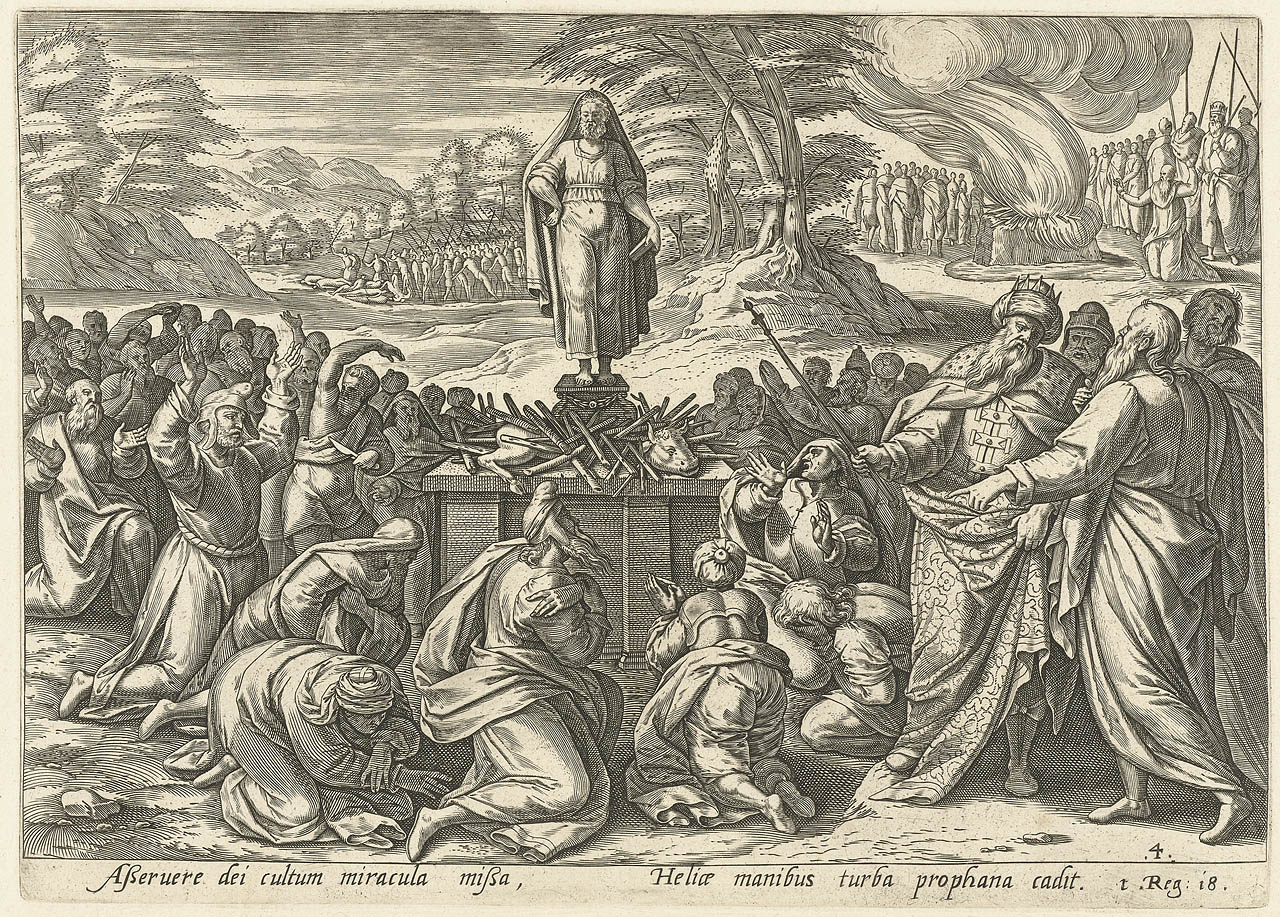Reading the Haftorah this Shabbat brought to mind scenes from the 2004 Republican National Convention in Madison Square Garden in New York City where attendees where waving pictures of John Kerry chanting “Flip-flop, flip-flop…” referring to Kerry’s ever changing position on the war in Iraq (“First I voted for it, before I voted against it”) and other political issues. Former Governor of New York State, George Pataki, said there, “This year, we will win one for the Gipper, and they will lose one with the Flipper.” Kerry lost, as flippers usually do.
This Haftorah (weekly portion of Prophets read publicly in Synagogues) starts with an astonishing statement of Elyahy Hanavi (Elijah the Prophet), “How long will you waver between two ideas? If the Lord is G‑d, follow Him, and if the Baal, follow him.” (Melachim-I Kings, 18:21) I suppose, Elijah the Prophet had a dislike for flippers as well. This statement is startling, however. Shouldn’t have Elijah, the Prophet of G‑d, admonish people to follow One and True G‑d? Shouldn’t have he admonish them not to follow a pagan deity, an idol? Why did Elijah find this flip-flopping even more despicable than avodah zarah (an idol worship, which is a cardinal sin)?

Elijah and the Prophets of Baal
Let us define a “state” of a believer B such that this function has two possible values: (1) Belief in One G‑d and (2) belief in a pagan deity (an idol). Israelites to whom Elijah addressed his criticism wavered between these two believes. They hedged their bets, as it were, believing a little bit in G‑d and a little bit in Baal. By wavering in their faith, Israelites put themselves in a state of superposition such that their wavefunction describing the state of their belief was a linear superposition of two wavefunctions – (1) believing in One G‑d and (2) believing in Baal. Or, put another way, we can say that the “wavefunction” of G‑d was a linear superposition of two wavefunctions: (1) Israelites believed in G‑d and (2) Israelites did not believe in G‑d. Similarly, the wavefunction of Baal was a linear superposition of two wavefunctions: (1) Israelites believed in Baal and (2) Israelites did not believe in Baal. Normally, these believes are mutually exclusive. By flip-flopping between two ideas, i.e., by putting themselves in a state of superposition between believing in G‑d and believing in Baal, Israelites entangles G‑d with Baal.
This is what outraged Elijah. It’s bad enough to engage in idol worship. But to entangle G‑d with a pagan deity was sacrilege that Elijah would not stand for! By demanding that Israelites follow one believe or the other, Elijah essentially demanded they collapsed the wavefunction and fixed the value of the state of believe wither believing in G‑d or in an idol. Indeed, by performing a miracle on Mt Carmel and forcing Israelites to acknowledge True G‑d – Havaya hu HaElokim (Y‑H‑V‑H is our G‑d) – he collapsed the wavefunction thereby disentangling, as it were, G‑d from a pagan deity, Baal.
Moral lesson of this story is obvious – thou shall not be a flipper!

Philipps van Galle, Elijah competes with the Prophets of Baal (1575 -1600). Rijksmuseum, Amsterdam

Leave A Comment